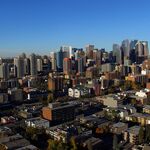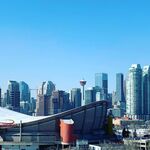JoeUrban
Active Member
Just for fun I used the 5 yr average growth for each city and used that to forecast. At current 5 year average rates Airdrie would surpass Red Deer in 2033 and Lethbridge in 2035.It'll happen eventually soon, although I am impressed with Lethbridge's growth lately. Statscan estimates city has population of 111,400 in 2024, putting it just behind Red Deer. link to statscan table
I'd assume Lethbridge's growth in the long-run will moderate relative to the super-charged growth of the big city suburbs like Airdrie, or even Calgary-Edmonton corridor growth like Red Deer. That said, for being relatively economically isolated Lethbridge hasn't struggled to grow. Lethbridge also seems disconnected to the boom-bust nature of most of the other cities in Alberta and just plugs along.
Here's a quick graphic of some of these smaller centres growth over time. Airdrie is certainly notable, but the other trend is the far slower growth of the Grande Prairie (transitioned from a high growth to slow growth place), Medicine Hat and St. Alberta as one slow-growth cluster; whereas Red Deer, Lethbridge and Airdrie are consistently in a higher growth paradigm:
View attachment 664477
I didn't do an in-depth analysis of each jurisdiction as there's lots of quirks, boundary conditions for each that help explain each trend. But interesting to watch!
I wonder if it will have a proper downtown by then...
Guess we'll see what the next decade brings.




